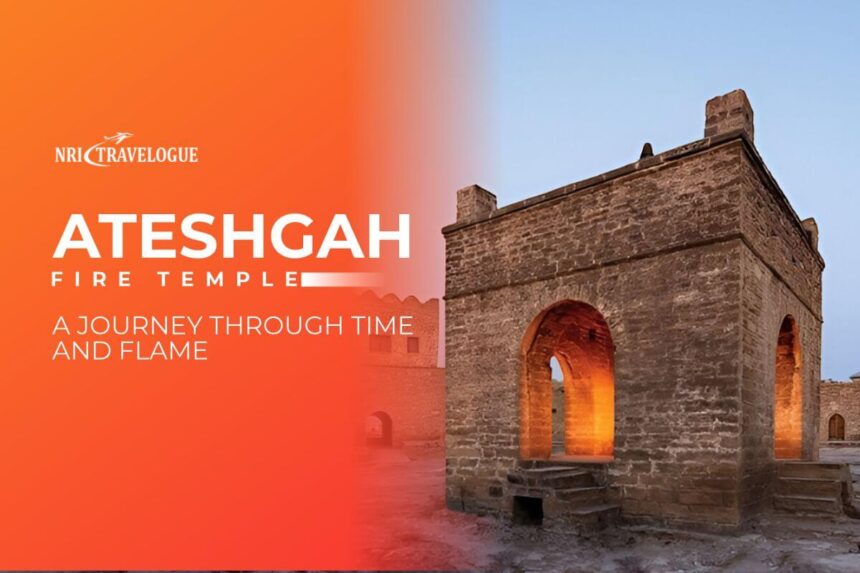Nestled on the Absheron Peninsula, just 30 minutes from Baku’s bustling city center, the Ateshgah Fire Temple stands as a testament to centuries of spiritual devotion and architectural ingenuity. This unique structure, often referred to as the “Fire Temple of Baku,” offers visitors more than just a glimpse into Azerbaijan’s rich history; it provides an immersive experience into the ancient practices of fire worship that once thrived in this region.
A Glimpse into the Past: The Origins of Ateshgah
The Ateshgah Fire Temple’s history dates back to the 17th and 18th centuries, constructed by the Baku-based Hindu community with influences from Sikh traditions. Situated in Surakhany (now known as Amirjan), the temple was built over natural gas vents, which historically produced eternal flames—a phenomenon that deeply influenced the site’s religious significance.
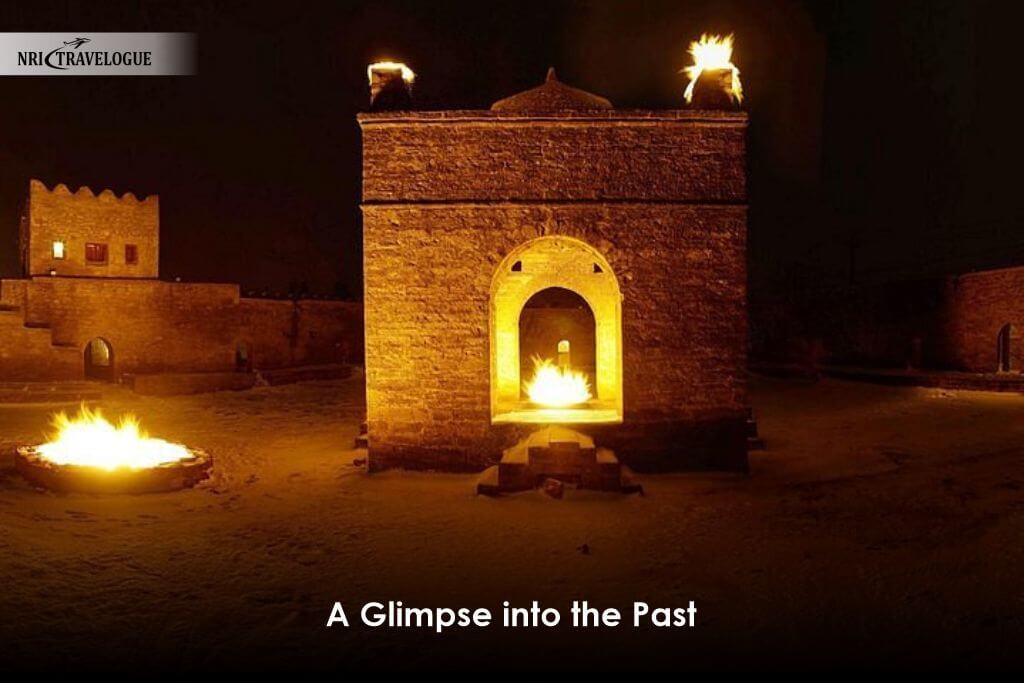
The term “Ateshgah” itself is derived from the Persian and Azerbaijani word “Atəş,” meaning fire. The temple’s design reflects a blend of Zoroastrian, Hindu, and Sikh influences, showcasing the region’s diverse religious heritage.
Architectural Marvel: Structure and Design
The Ateshgah Fire Temple is a pentagonal complex with a central courtyard surrounded by cells for monks. At its heart lies a tetrapolar altar, historically used for fire rituals. The temple’s architecture follows the Shirvan-Absheron style, characterized by its fortress-like appearance and intricate stone carvings.
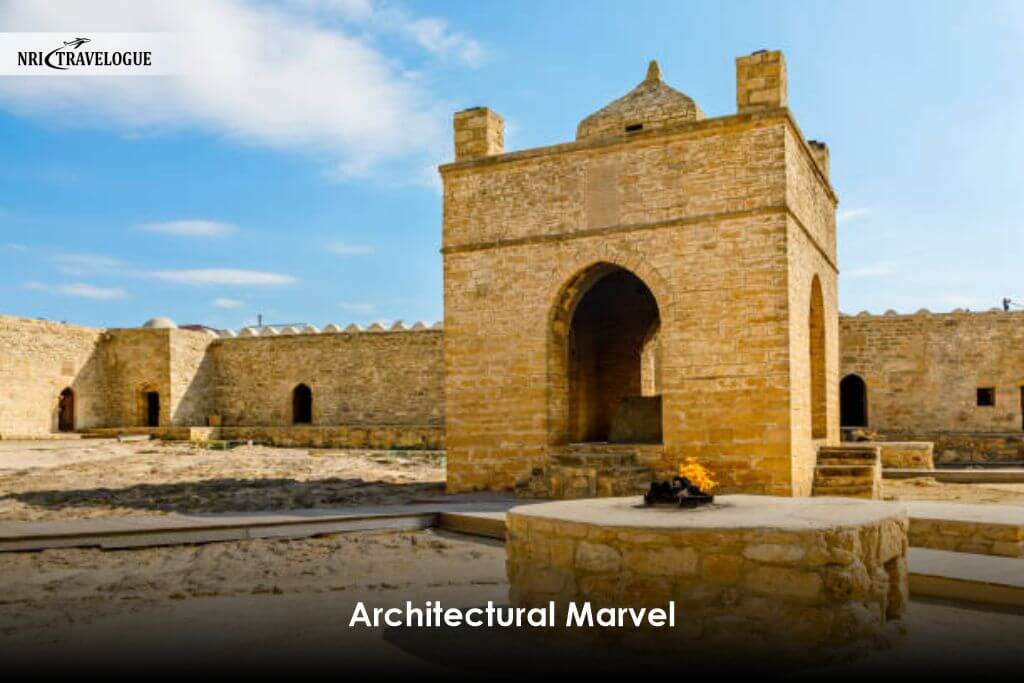
Inside, visitors can explore various chambers, each serving different religious purposes. The walls are adorned with inscriptions in Sanskrit, Punjabi, and Persian, highlighting the temple’s role as a place of worship for Hindus, Sikhs, and Zoroastrians.
The Eternal Flame: A Symbol of Devotion
One of the most captivating aspects of the Ateshgah Fire Temple is its eternal flame. Originally fueled by natural gas vents, the flame was extinguished in the late 19th century due to the decline of natural gas sources. Today, the flame is maintained using a piped gas supply, continuing to serve as a symbol of the enduring spiritual traditions that once flourished here.
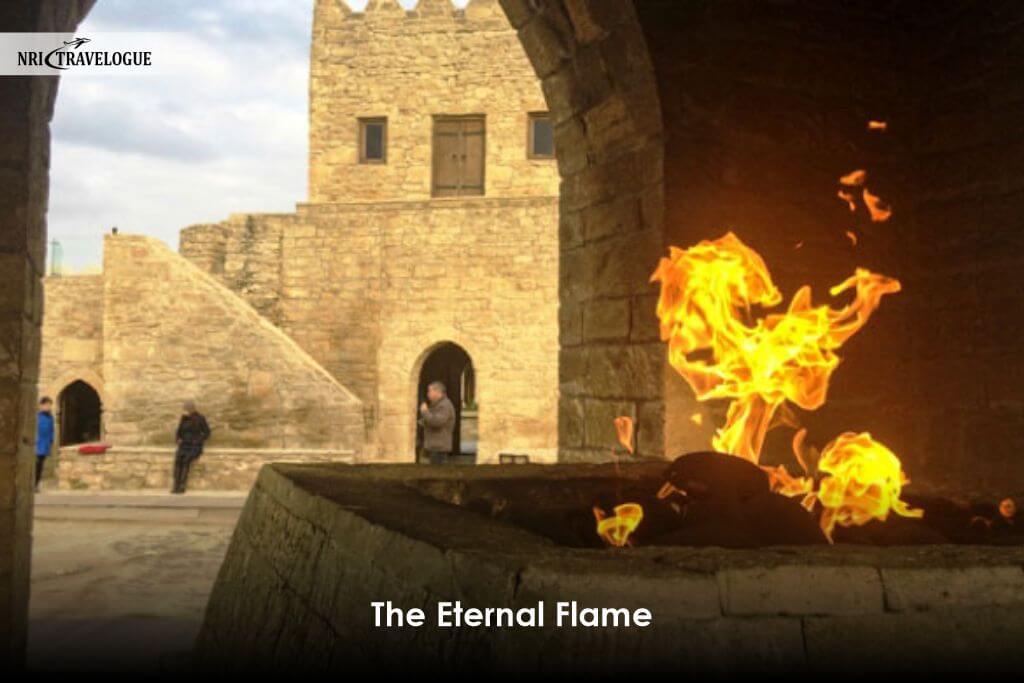
The presence of the eternal flame underscores the significance of fire in the religious practices of the temple’s worshippers. In Zoroastrianism, fire is regarded as a representation of divine light and wisdom, whereas in Hinduism, it is viewed as a purifier and an offering to the gods.
Cultural Significance: A Crossroads of Beliefs
The Ateshgah Fire Temple stands as a cultural crossroads where different religious traditions intersect. The temple’s construction by the Hindu community, with influences from Sikhism, reflects the interconnectedness of religious practices along the Silk Road.

Over time, the temple attracted pilgrims from various regions, including Persia and India, who journeyed to Surakhany to partake in the temple’s rituals and to witness the natural phenomenon of the eternal flame.
Visiting Ateshgah: What to Expect
A visit to the Ateshgah Fire Temple offers a unique opportunity to step back in time and experience a place of spiritual significance. The temple is open to visitors year-round, with the best time to visit being between April and October when the weather is pleasant.
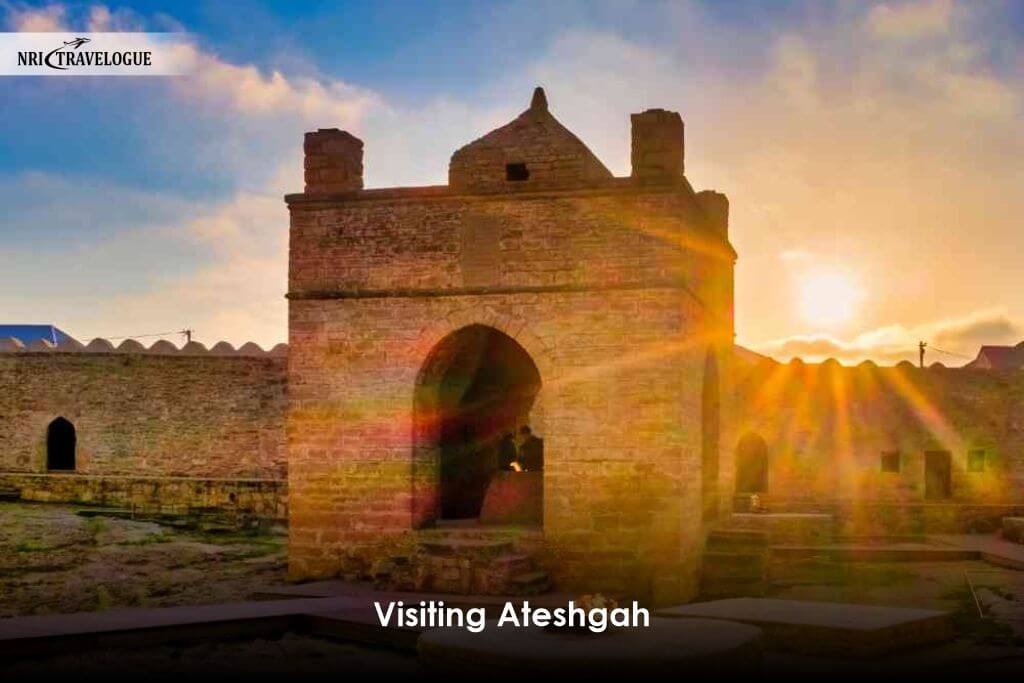
The entrance fee is approximately 9 AZN (around 452 INR), and guided tours are available to provide deeper insights into the temple’s history and significance.
Inside the temple, visitors can explore the various chambers, admire the detailed architecture, and learn about ancient fire-worship practices, Zoroastrian rituals, and the temple’s role in the region’s religious history.
Preserving a Legacy: Ateshgah Today
In 2007, the Ateshgah Fire Temple was declared a state historical-architectural reserve by a presidential decree, underscoring its importance as a cultural and historical landmark. Today, the temple serves not only as a tourist attraction but also as a center for preserving and promoting the rich religious heritage of Azerbaijan.
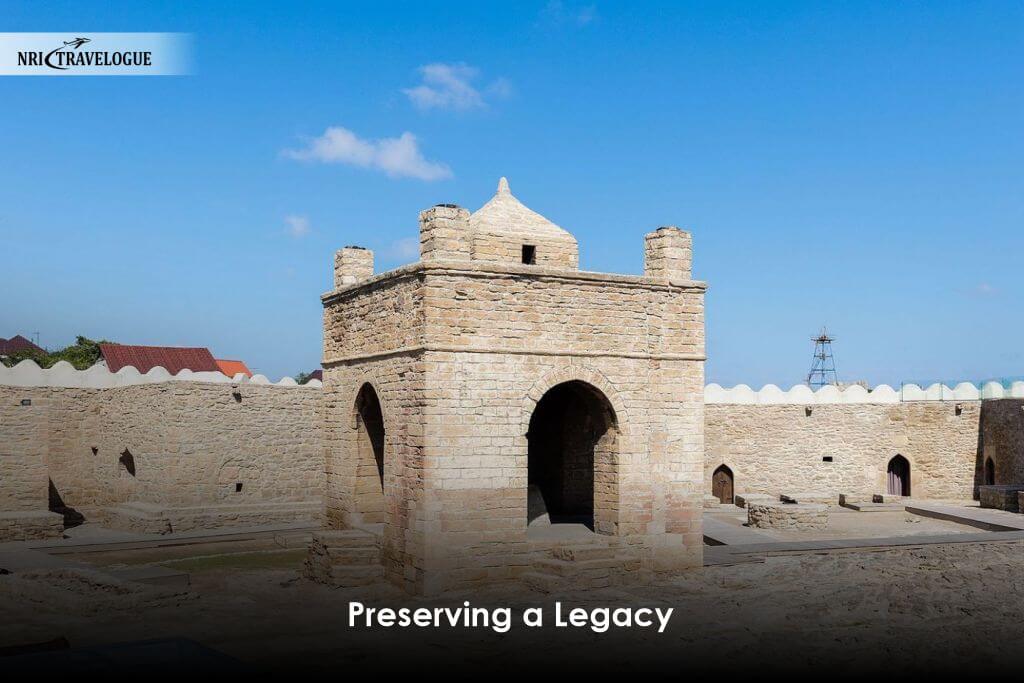
The temple’s inclusion in UNESCO’s tentative list for World Heritage Sites further highlights its global significance and the need for continued efforts to protect and preserve this unique monument.
Conclusion: A Timeless Journey
The Ateshgah Fire Temple stands as a timeless symbol of the spiritual devotion and architectural brilliance that characterized the ancient civilizations of the Absheron Peninsula. Its unique blend of religious influences, captivating architecture, and enduring flame make it a must-visit destination for those seeking to understand the rich tapestry of Azerbaijan’s cultural heritage.
Whether you’re a history enthusiast, a spiritual seeker, or a curious traveler, a visit to the Ateshgah Fire Temple offers a profound glimpse into a bygone era where fire was not just an element but a divine presence. So, plan your visit today and experience the warmth of history that continues to glow brightly in the heart of Baku.


